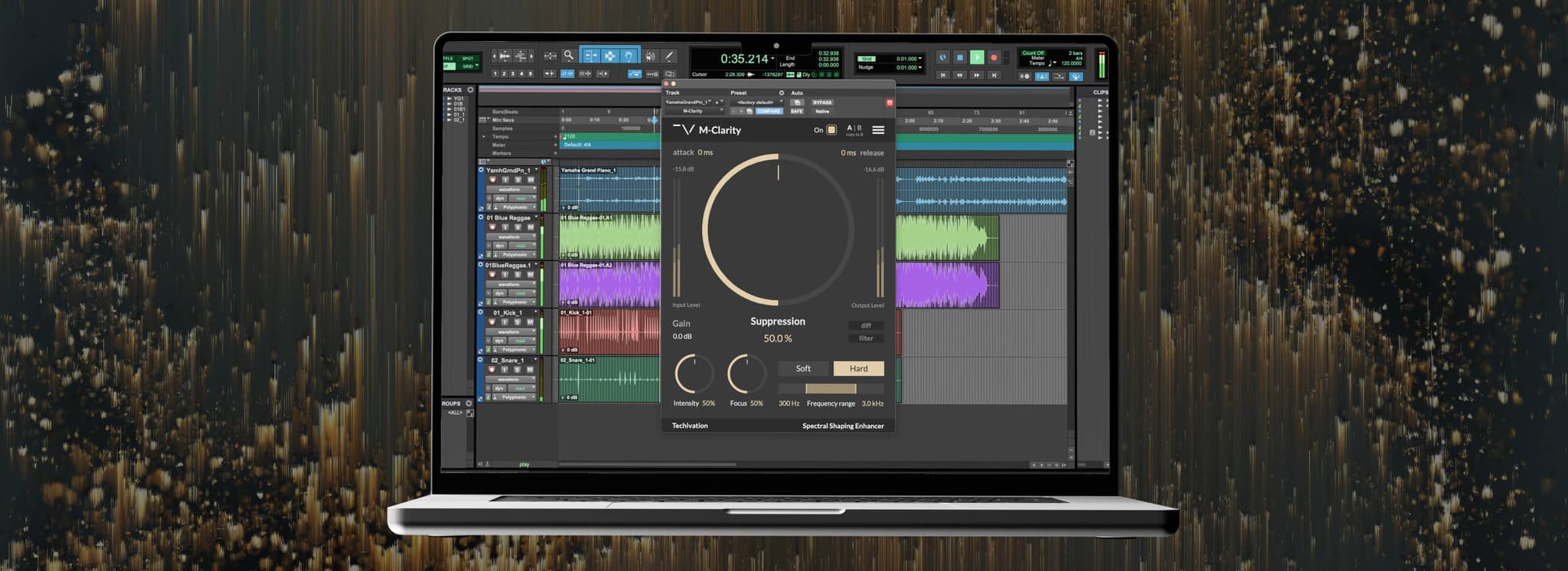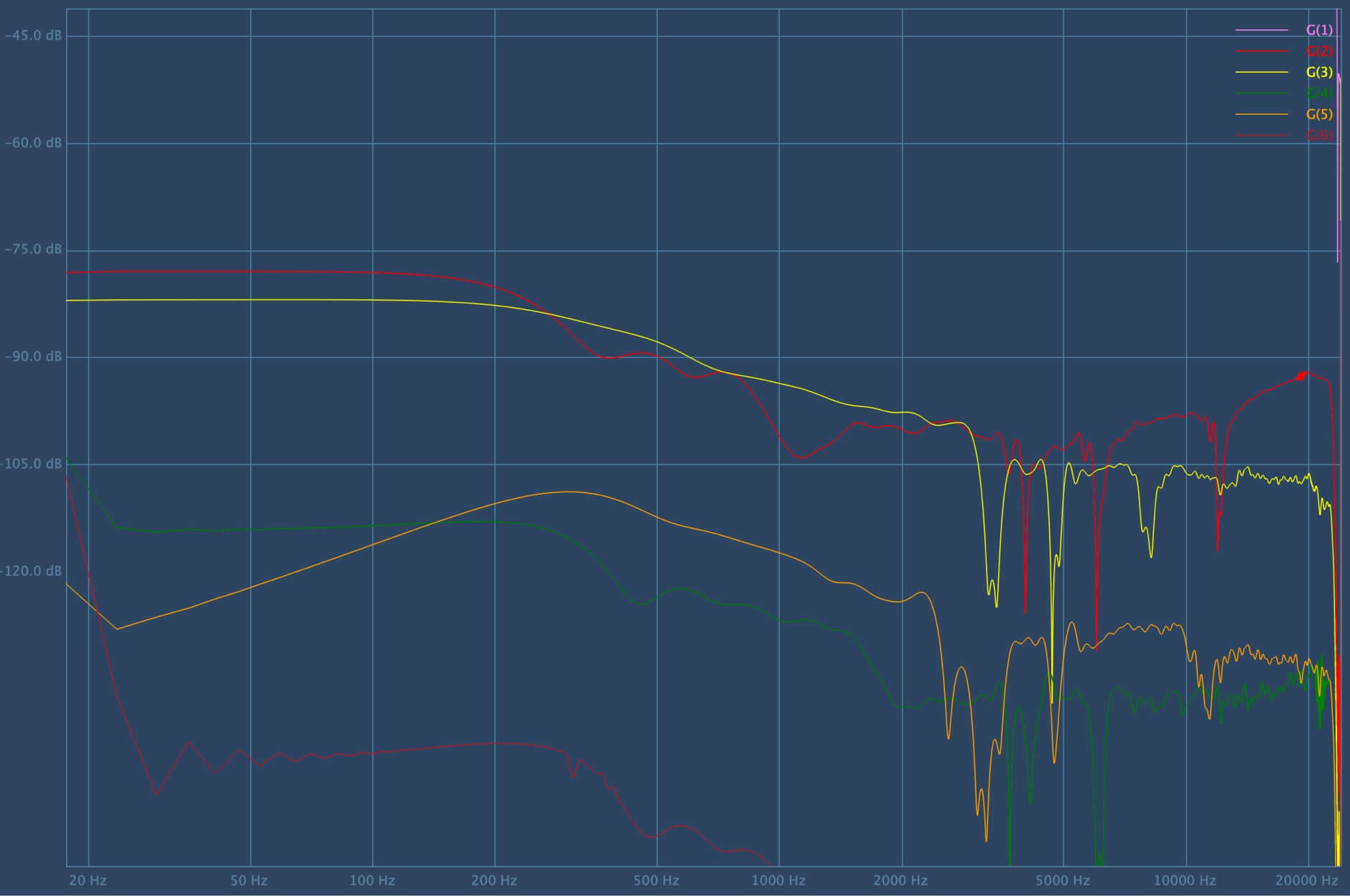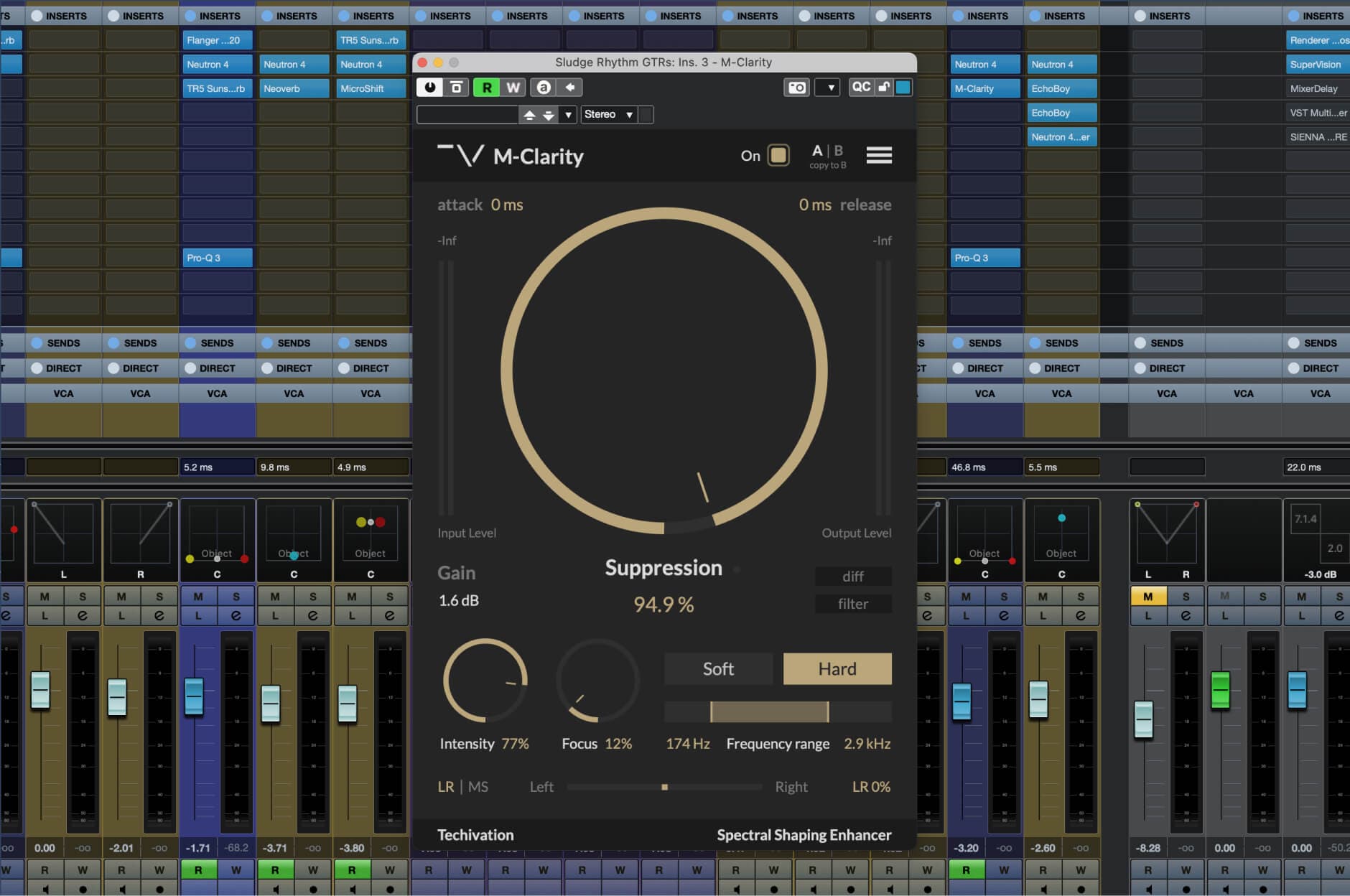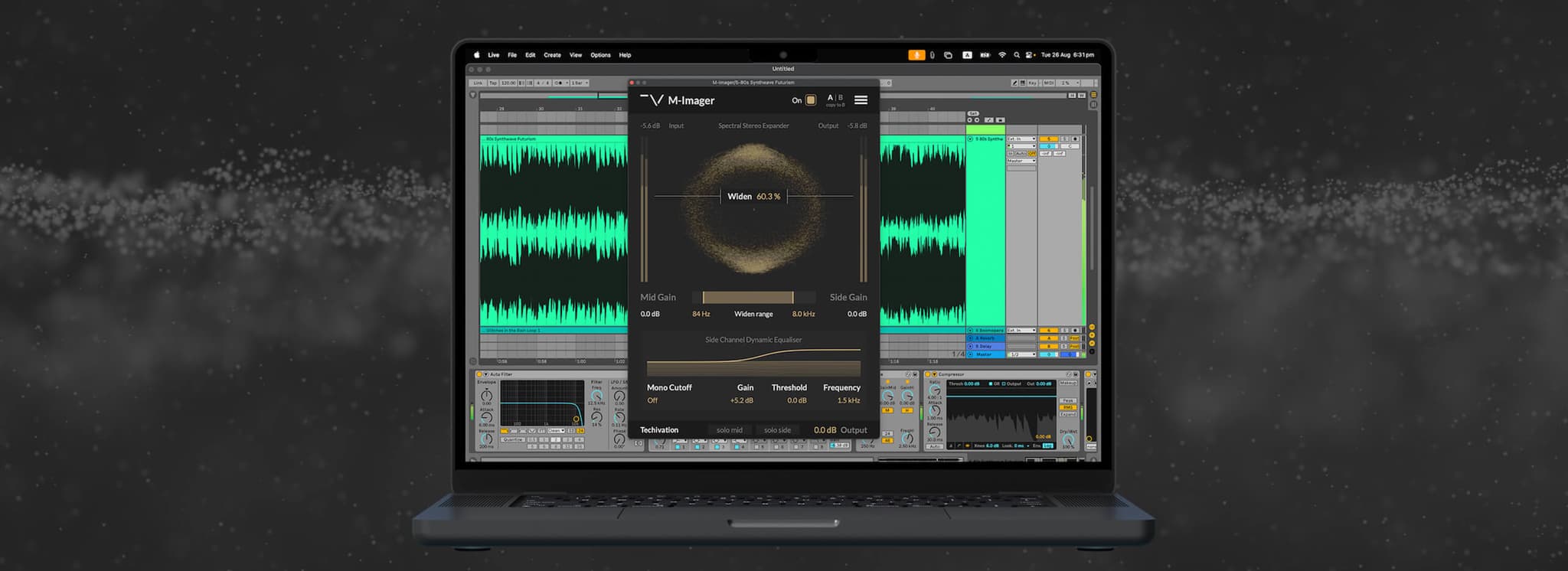Redefining Analog Smoothness:M-Clarity, The Cutting-Edge Spectral Processor

In recent years, we have seen the release of numerous advanced plugins designed to help mixing engineers in solving complex audio issues. These plugins are powered by sophisticated algorithms that dynamically react to audio signals, offering capabilities that were once unimaginable.
Regardless of where you stand on the analogue versus digital debate, it is clear that both approaches have the potential to deliver outstanding results while offering distinct characteristics.
This fact has been proven by top engineers who have transitioned to a fully in-the-box mixing workflow, using digital tools that combine emulations of revered analogue gear, pristine digital plugins, and innovative processors.
Before delving into the remarkable capabilities of M-Clarity and what it can do, let us take a moment to explore the analogue world. By gaining insights into its functioning, we can better appreciate how tools like M-Clarity effectively solve some of the challenges traditionally addressed by analogue gear.
The Warmth of Electrical Signals
If you have ever had the opportunity to mix on an analogue console, you may have noticed the ability to apply a 10dB boost at 6K to electric guitars without encountering harshness. While analogue emulations can sometimes introduce unwanted harshness in similar scenarios.
Analogue gear's intricate electrical interactions often result in what we can refer to as "additional free processing."In a classic analogue environment, comprising a console, outboard gear, and tape machines, audio signals go through multiple circuits, where various parameters are altered, including phase, frequency response, harmonic distortion, and noise.
For instance, a tape machine can significantly affect the phase, while harmonic distortion can emphasize specific frequencies. Even just passing a signal through a piece of gear can yield a pleasing effect, particularly when using transformer-based gear.
Consider the impact of harmonic distortion in analogue gear. Observe its frequency response and the notches that often correspond to frequencies perceived as harsh or unpleasant. You might even notice a resemblance to Fletcher-Munson curves.

If you are unfamiliar with Fletcher-Munson curves, they are a set of experimentally determined graphs that illustrate the loudness, measured in dB SPL, required for sounds at different frequencies to be perceived as equally loud. In essence, they reveal how loud a frequency must be compared to another frequency to achieve a perceived equal loudness. It is a fascinating concept to explore how the non-linear behaviour of analogue gear can fix issues like harshness or muddiness.
Moreover, analogue gear has dynamic qualities that adapt to audio signal levels. Sometimes, we obtain unexpected improvements in audio quality through analogue gear that are byproducts of its operation. However, it is important to note that high-quality analogue gear comes at a considerable cost, so such improvements are far from being truly "free."
The Techivation team has developed advanced digital tools that address issues such as muddiness, harshness, and unpleasant resonances.
Unleashing Spectral Brilliance
So, how can we achieve the same level of sweetness in our digital mixes? What processing tool can unlock the full potential of our tracks?
The answer lies in M-Clarity—a revolutionary spectral processor. Imagine the thrilling effect of running your audio sources through high-quality Class A analogue gear, transforming the character of your tracks, and infusing them with excitement. M-Clarity achieves a similar outcome by eliminating unpleasant resonances and revealing the true character of your tracks, all without introducing unwanted artefacts.
Why Spectral Shaping?
You may wonder why spectral shaping is a crucial consideration. Can't a regular notch filter suffice in removing unwanted resonances? Or dynamic EQs and multiband compressors?
While regular EQ can indeed address such issues, it has certain limitations. Even dynamic EQs fail to dynamically track resonances. While you can configure a dynamic EQ band to respond to specific frequencies, the frequency choice remains fixed. Moreover, the adjustments made by regular EQs tend to be broad and lack the precision and complexity offered by spectral shaping.
This is where M-Clarity excels. It dynamically shapes audio sources, making intricate adjustments across the entire frequency spectrum. Such precision is nearly impossible to achieve manually using conventional tools like dynamic EQ or a multiband compressor. With M-Clarity, you gain precise control over its behaviour, enabling you to focus on specific frequency ranges and define how it treats your audio signals.
Let us delve into one of my favourite use cases for M-Clarity:muddy vocals. Consider a scenario where you encounter a boomy vocal plagued by irritating resonances in the low end. While you could try to address these issues with a regular EQ or a multiband compressor, often the problem extends beyond simply removing a few troublesome frequencies. In such cases, you need a tool that can dynamically shape the sound, addressing the fundamental issues at hand.
Audio Example:Vocal Muddiness Test
M-Clarity: Bypassed
Before/After Comparison - Adding Weight to Kick & Snare
Now let’s do a similar test, but this time with male vocals and see what M-Clarity can do with it.
M-Clarity: Bypassed
Before/After Comparison - Adding Weight to Kick & Snare
In these examples, we deliberately used more extreme settings to accentuate their impact, enabling us to observe the full extent of M-Clarity's capabilities. However, in actual mixing scenarios, a more subtle approach would be preferred, and M-Clarity shines even then—retaining its pristine performance without introducing any undesirable artefacts. This is where many processors often falter—struggling to maintain quality under extreme settings. But with M-Clarity, you can trust in its reliability, no matter the intensity of your adjustments.
Embracing the Precision of Digital
M-Clarity embodies the essence of the finest analogue gear—its ability to dynamically respond to audio sources, transforming them into something more pleasing to our ears. While M-Clarity does not emulate analogue gear, it captures the essence of analogue warmth and smoothness, shaping audio in a manner that evokes the finest analogue processing.
In addition to its impressive capabilities, M-Clarity features a user-friendly GUI. It has been thoughtfully designed to meet the needs of modern producers working on computers equipped with screens, keyboards, and mice. Its intuitive interface ensures that harnessing the power of M-Clarity becomes a seamless and enjoyable experience.

With M-Clarity, every element is strategically positioned to promote speed and efficiency in audio processing. The interface embraces a sleek and modern design, featuring a clean layout that allows for quick navigation and seamless workflow.
Experience M-Clarity for Yourself
But don't just take our word for it—experience M-Clarity firsthand. Download a 14-day free trial and embark on a journey of audio refinement. Discover how M-Clarity swiftly becomes an indispensable tool in your sonic arsenal.
Written By Gleb Karpovich - Mixing Engineer
Share this Article
Featured in this post



![[Video] New Update Released: Techivation M-Exciter](/_next/image?url=https%3A%2F%2Fstatic.techivation.com%2Fuploads%2FM-Exciter%2520New%2520Update.jpg&w=2048&q=75&dpl=dpl_8MtNB4V4GNBGc35CzAz4qvG2ozTf)
